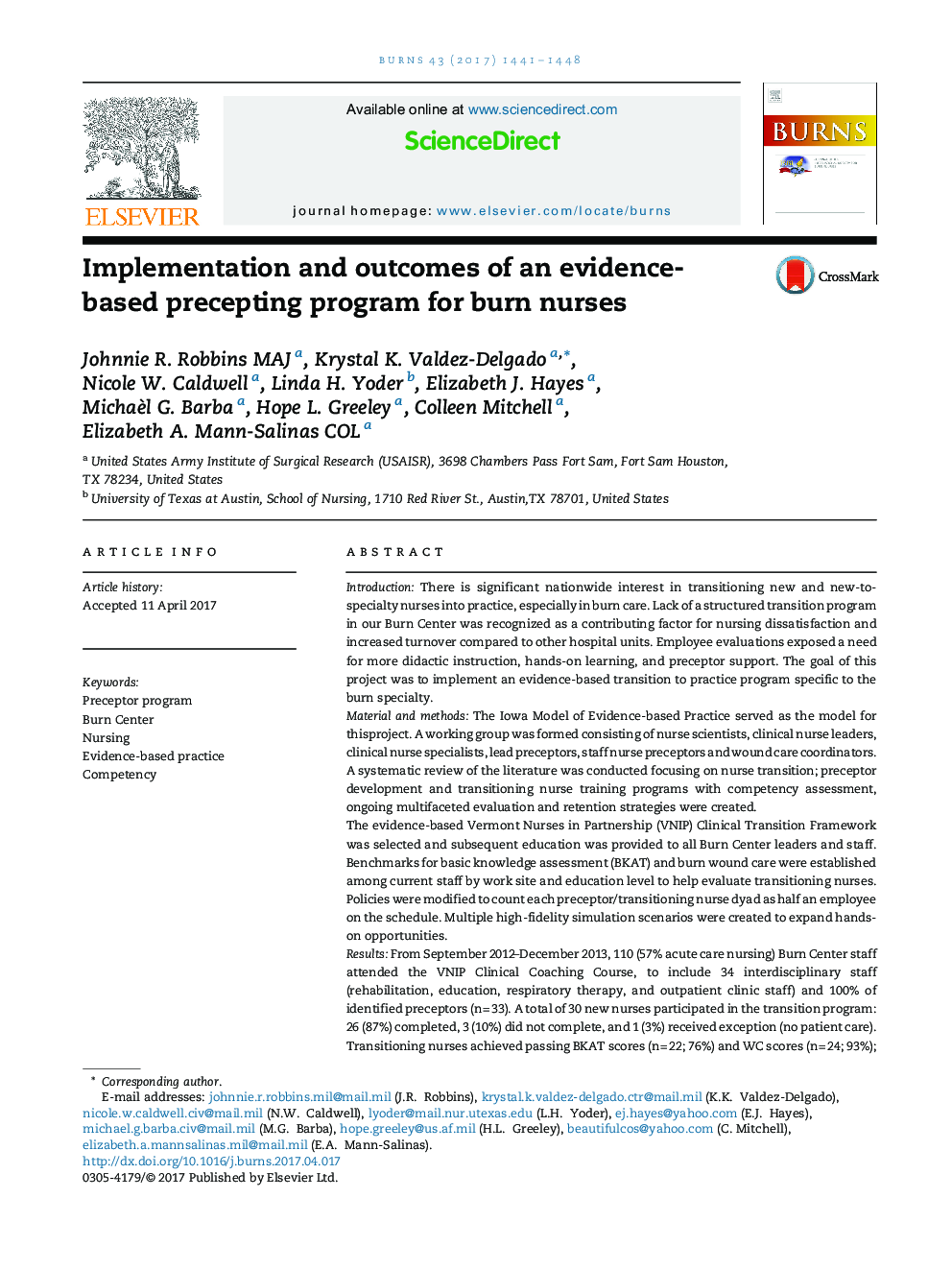| کد مقاله | کد نشریه | سال انتشار | مقاله انگلیسی | نسخه تمام متن |
|---|---|---|---|---|
| 5635946 | 1581729 | 2017 | 8 صفحه PDF | دانلود رایگان |
- Implementation of an evidence-based transition to practice program for burn nursing.
- An evidence-based approach toward preceptorship produced a standardized program.
- Use of objective metrics enabled ongoing assessment and made training adaptable.
- A standardized approach may improve training for all specialty practices.
IntroductionThere is significant nationwide interest in transitioning new and new-to-specialty nurses into practice, especially in burn care. Lack of a structured transition program in our Burn Center was recognized as a contributing factor for nursing dissatisfaction and increased turnover compared to other hospital units. Employee evaluations exposed a need for more didactic instruction, hands-on learning, and preceptor support. The goal of this project was to implement an evidence-based transition to practice program specific to the burn specialty.Material and methodsThe Iowa Model of Evidence-based Practice served as the model for this project. A working group was formed consisting of nurse scientists, clinical nurse leaders, clinical nurse specialists, lead preceptors, staff nurse preceptors and wound care coordinators. A systematic review of the literature was conducted focusing on nurse transition; preceptor development and transitioning nurse training programs with competency assessment, ongoing multifaceted evaluation and retention strategies were created.The evidence-based Vermont Nurses in Partnership (VNIP) Clinical Transition Framework was selected and subsequent education was provided to all Burn Center leaders and staff. Benchmarks for basic knowledge assessment (BKAT) and burn wound care were established among current staff by work site and education level to help evaluate transitioning nurses. Policies were modified to count each preceptor/transitioning nurse dyad as half an employee on the schedule. Multiple high-fidelity simulation scenarios were created to expand hands-on opportunities.ResultsFrom September 2012-December 2013, 110 (57% acute care nursing) Burn Center staff attended the VNIP Clinical Coaching Course, to include 34 interdisciplinary staff (rehabilitation, education, respiratory therapy, and outpatient clinic staff) and 100% of identified preceptors (n = 33). A total of 30 new nurses participated in the transition program: 26 (87%) completed, 3 (10%) did not complete, and 1 (3%) received exception (no patient care). Transitioning nurses achieved passing BKAT scores (n = 22; 76%) and WC scores (n = 24; 93%); individual remediation was provided for those failing to achieve unit benchmarks and transition training was modified to improve areas of weakness. Transitioning nurses' weekly competency progression average initial ratings on a 10 point scale (10 most competent) were 5 ± 2; final ratings averaged 9 ± 1 (n = 25) (p < 0.0001).ConclusionsAn evidence-based team practice approach toward preceptorship created a standardized, comprehensive and flexible precepting program to assist and support transition to specialty burn practice for experienced nurses. Use of objective metrics enabled ongoing assessment and made training adaptable, individualized, and cost effective. Application of this standardized approach across our organization may improve consistency for all transitions in practice specialty.
Journal: Burns - Volume 43, Issue 7, November 2017, Pages 1441-1448
